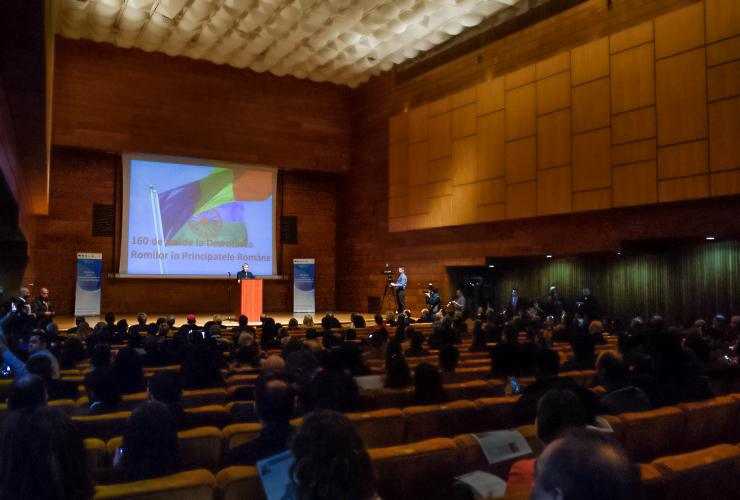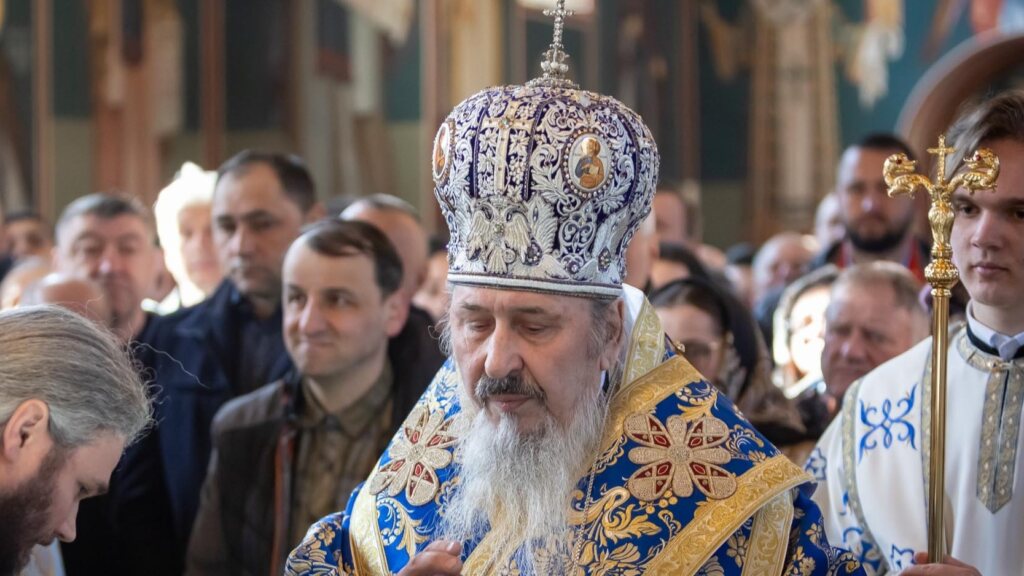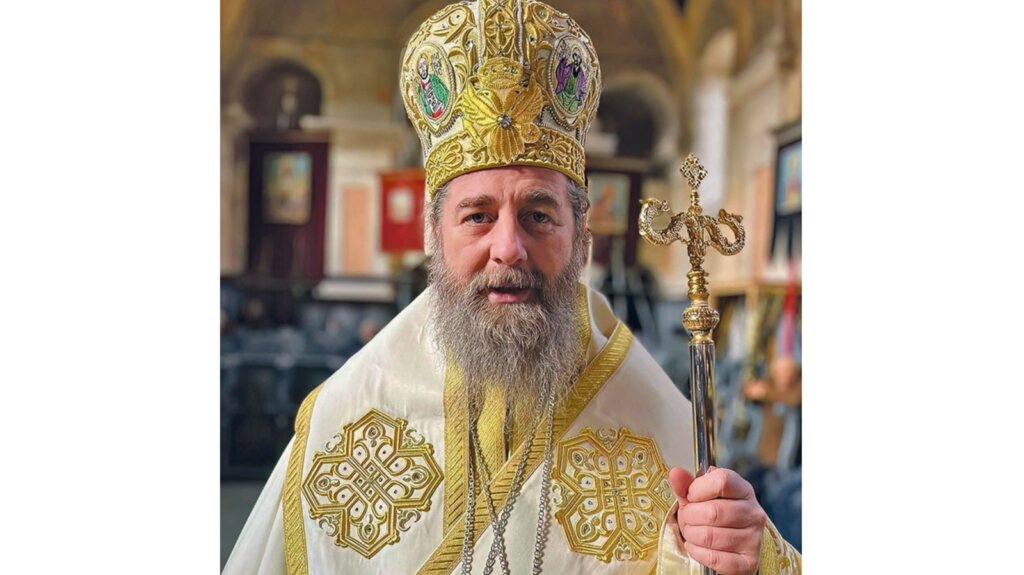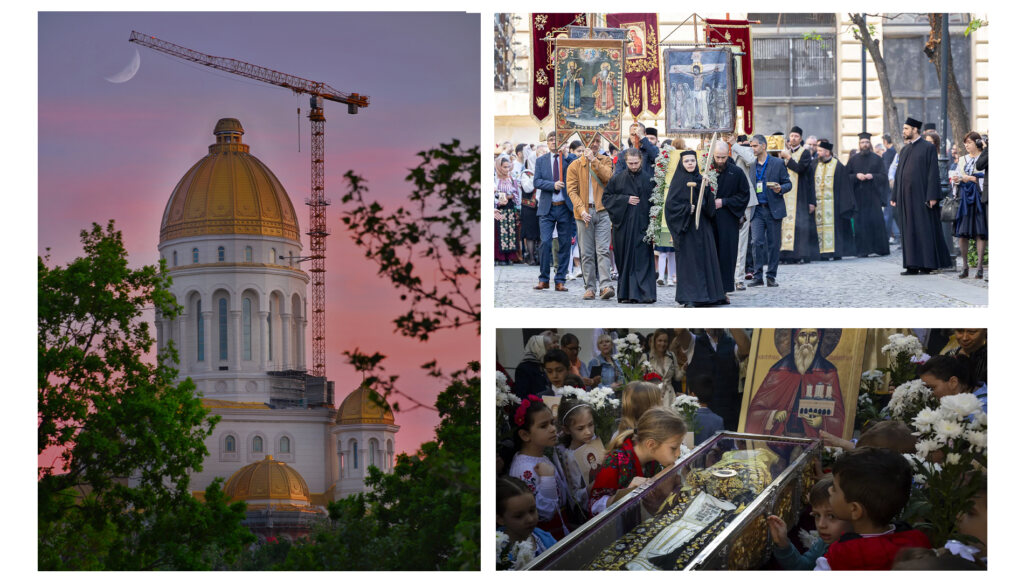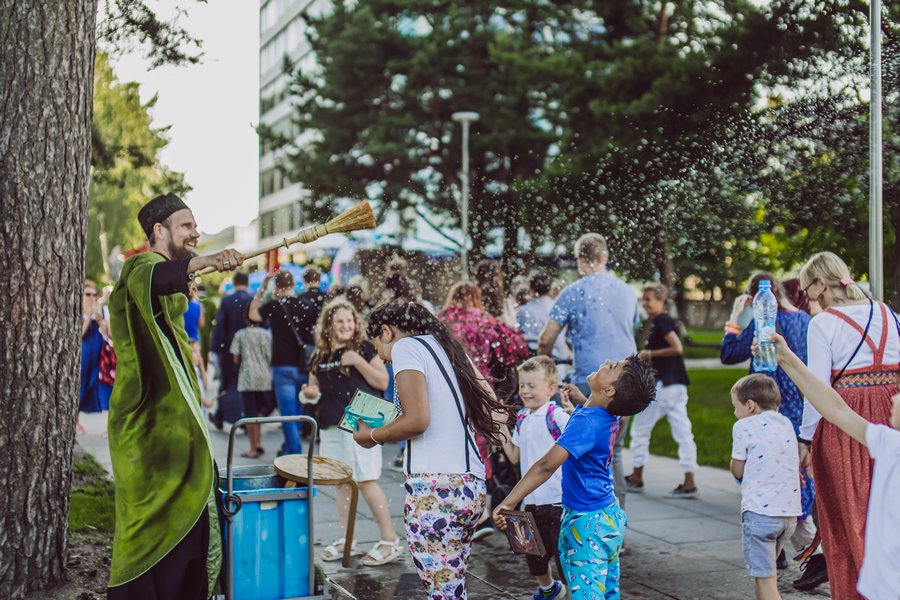The message of His Beatitude Patriarch Daniel of the Romanian Orthodox Church on the occasion of the 160th anniversary of the Emancipation of the Roma in the Romanian Principalities, an event organized by the Department for Social Inclusion and Human Rights of the Romanian Government, at the National Art Museum of Romania, February 19, 2016:
This year, 2016, marks 160 years since the emancipation of the Roma in the Romanian Principalities (February 20, 1856). The Roma minority is one of the largest ethnic groups in Romania. According to the 2011 census, they numbered 621,573 people (ie 3% of the total population).
The establishment of the Roma people in the Romanian Principalities and their legal status as slaves for more than five centuries are topics often presented superficially or tendentiously.
Although few documents from the period have been preserved, based on linguistic studies, the exact belonging of the Roma people to the Indian people was established in the 18th century, and their language is derived from ancient Sanskrit.
On their way to Europe, they crossed the Middle East, from where they borrowed a number of linguistic features, then settled for a time in the Eastern Roman Empire or Byzantine Empire (Ρωμανία – Románia – the Greek correspondent of Imperium Romanorum) whence they took their name of Roma, and their language was called Romani [1].
Honest research of the phenomenon of Roma slavery in the Romanian Principalities must take into account the international context of the time, not only the local one.
Slavery was part of the social life of the medieval Romanian Principalities to the same extent that it was an institution of neighbouring societies: Byzantine Empire, Serbia, Bulgaria, Ottoman Empire, Habsburg Empire, Tsarist Russia, but also more broadly: Latin America, United States of America, France, Great Britain, countries where the abolitionist movement (abolition of slavery) developed, but which in turn did not succeed in eradicating slavery until about the same period as in the Romanian Principalities or even after the Romanian Principalities.
It must also be said that the phenomenon of slavery of Gypsies in Romania has differences of understanding compared to slavery practised in Atlantic countries or in the colonies of Western Empires, where slaves did not have as many rights as Roma slaves in Romania.
The main characteristic of the institution of slavery in the Romanian Principalities refers to the lack of legal personality of the individual in this social category.
However, throughout the period of slavery in the Romanian Principalities, the nomadic Roma people were free to travel through the country and practice their customs.
Instead, the Roma who had a fixed job, ie a permanent activity, were forced to stay in the same locality. Although the Roma ethnic group had the largest number of slaves, at that time there were slaves from other ethnic groups and even Romanian slaves.
The sale or manumission of slaves or the physical punishments applied to Roma slaves was the legal norm of the time because Romanian slaves endured the same punishments as the Roma, and there was no discrimination in this regard.
Beyond the formal provisions of the laws of the time, the Romanian Orthodox Church tried to support the Roma minority in various ways.
The arguments of Metropolitan Gavriil Calimachi and the bishops of Moldavia in 1766, when the separation of Roma families was forbidden, are summarized as follows: “They too are made by God like other people and it is a great pity to be divided like cattle.”
The historian Viorel Achim, in the work “Gypsies in the history of Romania”, published by the Encyclopaedic Publishing House, Bucharest, 1998, says that the monastery gypsies were living a better life than the rest of the gypsies.
One of the fiercest fighters for the liberation of the Gypsies from the Romanian Principalities was Archimandrite Ioasafat Snagoveanul (Josaphat of Snagov), a servant of the Romanian Orthodox Church, who, taking part in the Revolution of 1848, was elected a member of the Commission for the Liberation of Gypsies, along with Cezar Bolliac and Petrache Poenaru (the scholarship holder and disciple of Saint Gregory the Teacher, Metropolitan of Wallachia), the reason for which, after the revolution, Ioasafat Snagoveanul was exiled, arriving in Paris, where he founded the first Romanian chapel in 1853. He died in exile, far from the homeland and far from the Roma he valued and defended.
The social liberation of the Roma people was a complex process which, in addition to granting individual freedom, also included stopping nomadism, involving the Roma in agriculture and integrating them into rural and urban communities.
However, the liberation found the Roma slaves unprepared. Although legally freed from slavery, most Roma remained near the monasteries where they had once been slaves, forming entire Roma villages, which still exist in the immediate vicinity of monasteries or former boyar houses.
They helped the landowners with agricultural work in exchange for certain amounts of money or food, and over time some became masters of the land on which they lived.
Those who practised various crafts settled near fairs and villages, continuing to carry out their crafts and traditions. All these are confessed, with gratitude, even by the Roma themselves, who, for example, want to celebrate the great events in their history near Bistrița Monastery in the Metropolis of Oltenia (Vâlcea County).
As for the spiritual care of the Church towards the Roma, we mention the existence of several pastoral works or liturgical books, such as the Study of Pastoral Care in the Romanian Church by Archimandrite Iuliu Scriban (Sibiu, 1924), which devotes several pages to pastoral activity among Roma, or the first Book of Prayers in the Romani language published in 2006 with the blessing of Patriarch Teoctist.
In 2007 a CD was printed with the Divine Liturgy of St. John Chrysostom in Romani language, and the translation of the following services is in the process: Baptism, Wedding and Funeral, by the care of His Eminence Archbishop Varsanufie of Râmnic.
Also, several Orthodox personalities are known, concerned with the emancipation of the Roma minority, such as the theology professor Dr. Barbu Constantinescu (1839-1891), priest Gala Galaction († 1961), as well as Archimandrite Calinic I. Popp Şerboianu († 1941) from Cernica Monastery.
The latter, of Roma ethnicity, being supported by the Church, studied theology, defending in 1908 the bachelor’s degree in theology at the Faculty of Bucharest. Endowed with literary and linguistic talent, he wrote several books about the Roma minority in Romania.
Archimandrite Calinic Şerboianu founded in March 1933 the General Association of Gypsies in Romania, which he initially led together with Gheorghe A. Lăzărescu-Lăzurica, working for the emancipation of the Roma by establishing a special popular University.
At the same time, he struggled to set up craft cooperatives, specific to Roma craftsmanship, being known as good craftspeople in wood or metal, but also for their musical talent. Archimandrite Calinic Şerboianu also left us a paper on the History and Customs of Gypsies in Romania, in French.
Many Romanian Orthodox priests had a humanitarian attitude towards the Roma, both during the black period of deportations to Transnistria, between 1941-1943, and later, to the present day.
Today, the Romanian Orthodox Church contributes to the efforts of Roma integration and assistance through the following programs:
– offering special places for Roma pupils and students in theological schools;
– encouraging the ordination of Roma theologians for Roma communities (there are Roma priests for Roma communities in Bucharest, Râmnicu Vâlcea, Slobozia and Bacău, but there are also many Roma priests who pastor Romanian Orthodox parishes, as well as Roma clerics serving in monasteries);
– building churches for Roma communities in urban and rural areas;
– organizing social-philanthropic and missionary programs for Roma communities or other programs that included, without discrimination, Roma beneficiaries (eg the program developed by the Romanian Orthodox Church in partnership with the Organization for the Integration of Minorities (IOM) for Roma victims of the deportations and their disadvantaged descendants, the programs of the Diocesan Centres: Iași, Craiova, Alba and Severin);
– providing support for Roma families affected by floods in previous years;
– inclusion of Roma young people with precarious financial situation and good results at school in the Choose School program of the Romanian Patriarchate;
– Establishment of a Roma Catechesis Office in Râmnicu Vâlcea, printing of prayer books and catechism in Romani language, publishing audio and video materials in Romani language;
– the inclusion of the Roma people in the social reintegration programs, as well as programs of professional qualification or reconversion, carried out by the dioceses;
– employment of Roma young people in the social economy structures set up by some dioceses;
– offering free religious assistance and services for the baptism of infants of poor Roma families (Bucharest, Cluj, Galati);
– organization of parish communities in the neighbourhoods of cities or in localities with a majority Roma population;
– free medical assistance in the Health for Villages campaign of the Romanian Patriarchate. It is conclusive that over 30% of the social workers of the Archdiocese of Bucharest are Roma people.
However, these social-pastoral activities coordinated by the Church face some difficulties due to the precarious economic situation of many communities in urban or rural areas. There is much will among our priests to help the poor, but few means to accomplish what is urgently needed. Nevertheless, where there is close cooperation between all the responsible factors, more hope and more intense spiritual communion is created.
Today, according to statistical data, in Romania there is the largest number of Roma in Europe, proving that the Romanian people have been and are hospitable and tolerant with the Roma people, but also with all ethnic minorities in Romania.
Therefore, we are called together, state institutions, Church and society to each contribute to the objective knowledge of historical truth, to look critically at what has been negative in the past and to contribute now to supporting the Roma minority in its social integration efforts while promoting respect for its identity and traditions.
† DANIEL
Patriarch of the Romanian Orthodox Church
[1] Neagu Djuvara, „O scurtă Istorie a românilor povestită celor tineri”, Editura Humanitas, București, ediția a IV-a, 2002, pp. 68-69.
[2]Constantin C. Giurescu, Istoria românilor, vol. II, Editura All, București, 2007, p. 511.
[3]În septembrie 1933, asociaţia a primit numele de „Uniunea Generală a Romilor din România”, sub conducerea lui Gheorghe Lăzărescu-Lăzurică, rom de etnie şi om de afaceri bucureștean. Semnificativ este faptul că Uniunea a fost susţinută încă de la înfiinţare de către Biserica Ortodoxă Română prin reprezentantul ei, Patriarhul Miron Cristea, cf. „Minorităţi etnoculturale. Mărturii documentare. Ţiganii din România (1919-1944)”, volum editat de Lucian Nastasă şi Andrea Varga, apărut la Centrul de Resurse Pentru Diversitate Etnoculturală, Cluj, 2001, p. 16.
